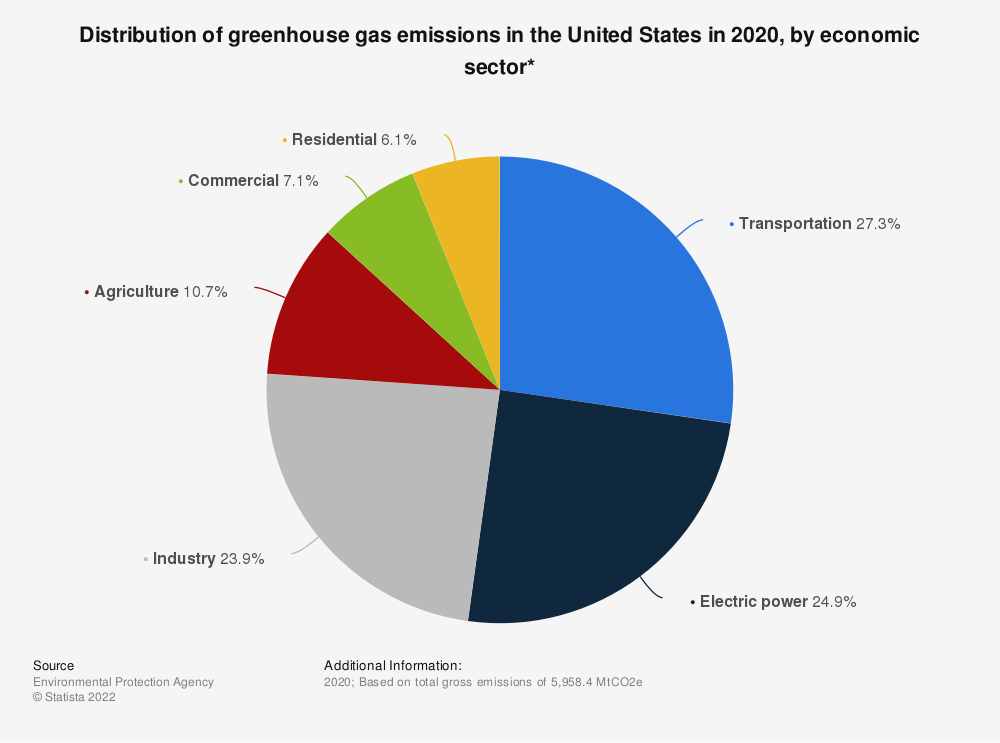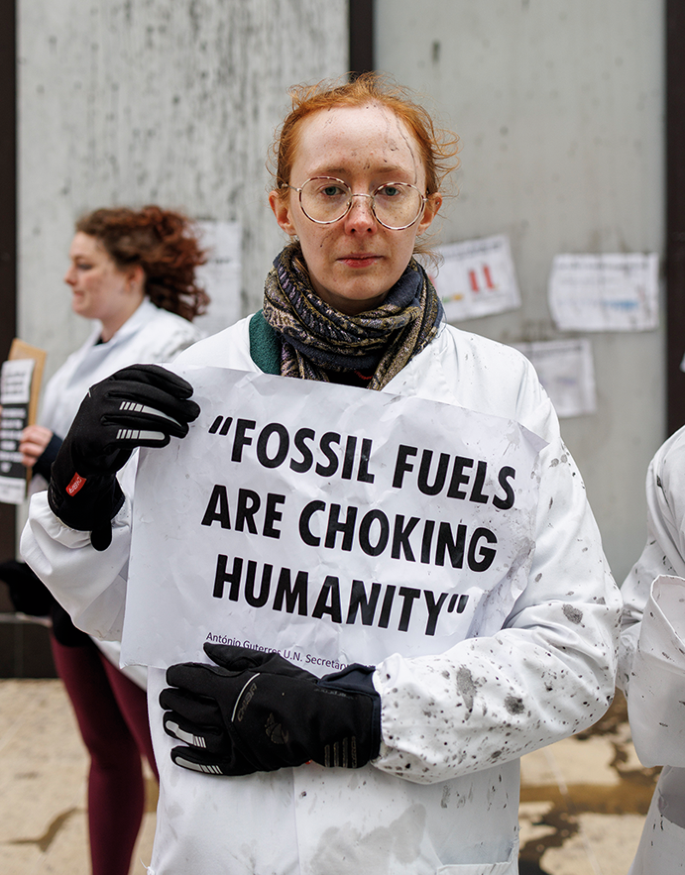Transportation and the Transition Revolution
Let’s peek at the pie chart containing six slices of different sizes. It is titled “Distribution of greenhouse gas emissions in the United States in 2020, by economic sector.” The big three are: Transportation 27.3%, Electric Power24.9%, and Industry 23.9%. Conspicuously, Transportation is the largest and accounts for more than a full quarter of our total carbon dioxide emissions.
The source of the pie chart is Environmental Protection Agency by Statista 2022.
Some progress in the US is being made in this Transportation Sector to reduce carbon emissions. Let’s look at California and what is happening there.

Two of the state’s metrics are really impressive: it has 40 million people and the fifth largest economy in the world. But more than all that, in August 2022 the governor announced that by 2035 all new vehicles sold in the state had to be either electric [EV’s] or plug-in hybrids [PHEV’s]. No more gasoline powered
cars.
Also, leading up to that 2035 date, California will require that by 2026, 35% of all new cars sold must be EV’s or PHEV’s. That will rise to 68% by 2030.
This is big! This is historic! This is revolutionary!
But even with regulators and car makers on board to reduce and then ban sales of new internal-combustion engine [ICE] vehicles, the transition will not be easy. Detroit’s Big 3 [Ford, GM, Chrysler-Stellantis] are already announcing plans almost daily for developing new sources of raw materials,working out supply chains and more. For example, one big difference is that the drive train in an EV has about 20 moving parts whereas an ICE typically has about 2,000 moving parts.
Additionally, an EV vehicle may have about 10,000 parts whereas ICE vehicles have about 30,000 parts. New factories are planned to manufacture batteries and new, as well as modified assembly plants, have also been announced in many mid-western states. The overall effort to bring about this transition is
enormous.
But it is underway.
Work force changes are also happening as the companies now require new and/or different skill sets in their employees. This whole process is what Tony Seba calls a “disruption”.
The car illustration capsulizes in part the problem with ICE’s.
The data [FuelEconomy.gov] and image [Karin Kirk] titled “Gasoline powered vehicle: …” is from Yale Climate Connections. The car and arrows show that about “80% of the energy is lost [wasted] to various inefficiencies.” Only about “16-25% of original [fossil fuel] energy goes to wheels” to move the car forward.
And, hopefully, this transition and reduction in carbon dioxide [CO2] emissions will be in time to make a serious and positive impact on the planet’s “climate crises.”
And this transition is none too soon.

See photo of female scientist by Crispin Hughes, courtesy by www.nature.com/articles/s41558-022-01461-y. This scientist in a lab coat with her sign says it very clearly; “Fossil Fuels are Choking Humanity.” One can read in the woman’s face a mix of emotions; concern, worry, empathy and more. She is one of many hundreds of scientists in recent weeks protesting the use of fossil fuels and the resulting climate impacts from the CO2 being emitted into the atmosphere.
They are worried. Very.
With good reason.
These are the scientists who are collecting the data, organizing it, tabulating and interpreting it. They understand the implications and are watching it play out in real time. They write reports to inform the public, to inform the policy makers and politicians, that action needs to be taken. But, what they see for
the most part, are baby steps and inertia. So, many of them, are taking the next step, civil disobedience, as they try to get the attention our climate crisis deserves from our leaders and decisionmakers.
And the following, in part, is illustrative what they are so worried about.
The recent flooding in Pakistan is unprecedented. One third of the country is underwater and this huge country of 230 million people is suffering “a calamitous monsoon season on steroids.” [Climate News; newsletter@e.independent.co.uk September 2, 2022].
2022-9-4p
The photo here by FIDA Hussain/AFP via Getty Images, shows a man and a boy moving 7 young children across a flooded area using a satellite dish, in Balochistan province, on August 26, 2022. The impact and numbers are staggering: the death toll is over 1,300 people, nearly 1 million homes have been
destroyed, 700,000 livestock lost and large areas of crops washed away.
A few months ago Pakistan and India were hit by the worst heatwave on record. With over 7,000 glaciers in the northern section of the country, severe melting occurred, which was followed by multiple cycles of heavy downpours. The heat wave, melting glaciers and rainfall exacerbated flash flooding as
the rivers raced downhill during the summer.
Then in late August more rainfall arrived which was nearly three times the national 30-year average. The results have been catastrophic and have been blamed on climate change brought about by enormous amounts of CO2 emitted into the atmosphere.
Jane Fonda, age 84, perhaps illustrates the courage and resilience needed at this juncture. Recently diagnosed with cancer and undergoing chemotherapy, the climate activist stated this past week, “and believe me, I will not let any of this interfere with my climate activism.”
And so it goes.
The scientific career of Raymond N. Johnson, Ph.D., spanned 30 years in research and development as an organic/analytical chemist. He is currently founder and director of the Institute of Climate Studies USA (www.ICSUSA.org). Climate Science is published monthly.



